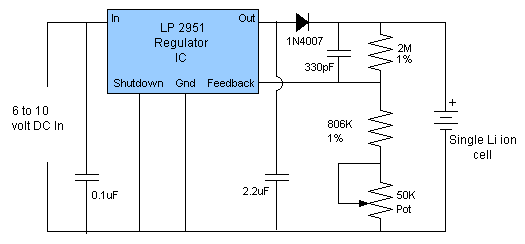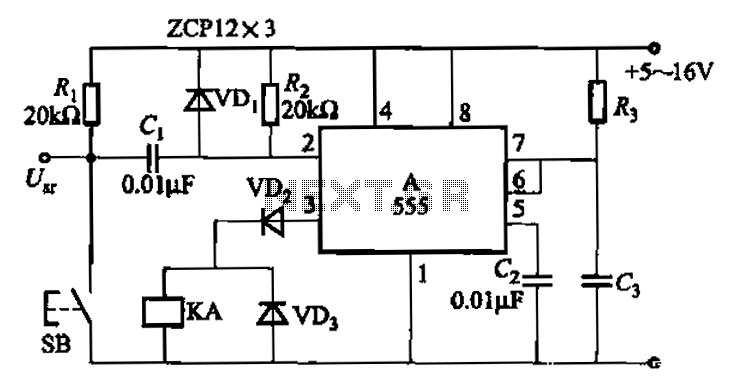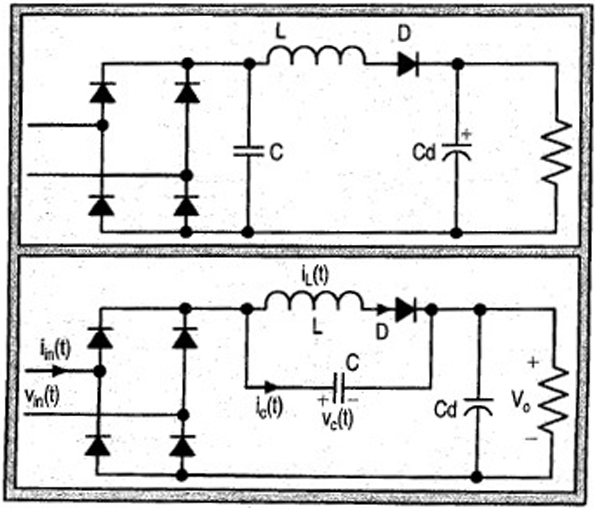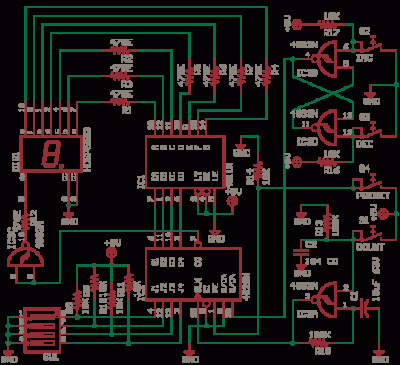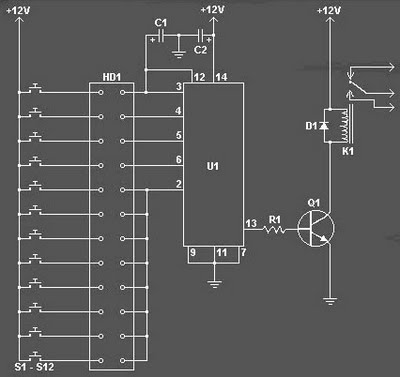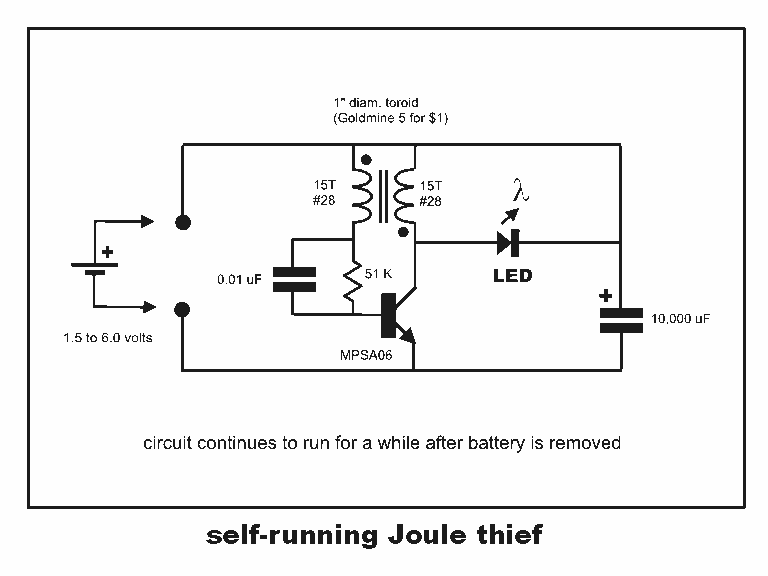
Solar Panel Voltage Regulator Charger Circuit
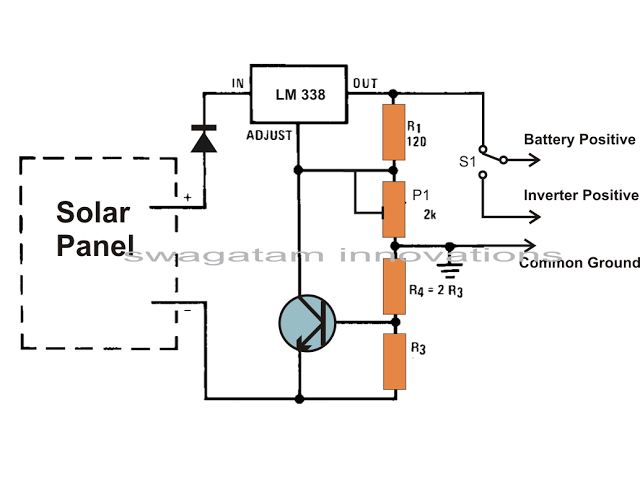
Solar panels are well-known devices that convert solar energy or sunlight into electricity. A solar panel consists of discrete sections of individual photovoltaic cells, each capable of generating a small amount of electrical power, typically between 1.5 to 3 volts. These cells are usually wired in series, allowing the total effective voltage generated by the entire panel to reach usable outputs of 12 volts or 24 volts. The power generated by a solar panel is commonly used for charging lead-acid batteries. Once fully charged, these batteries can be used in conjunction with an inverter to provide the necessary AC mains voltage for household electrical power. For optimal performance, sunlight must consistently strike the surface of the panel. Since the sun's position changes, solar panels may require tracking systems to follow the sun's path, enhancing electricity generation efficiency. Without a solar tracker, a solar panel operates at approximately 30% efficiency. While solar panels serve as the core component in converting solar energy to electricity, the generated electricity needs careful management before it can be effectively utilized in a grid-tie system. The voltage from a solar panel is unstable and fluctuates significantly based on the sun's position, intensity, and angle of incidence. Feeding this variable voltage directly to a battery can lead to potential damage and overheating, posing risks to the entire system. Therefore, a voltage regulator circuit is typically employed between the solar panel output and the battery input, ensuring that the voltage does not exceed safe charging levels for the battery. Ideally, the minimum voltage output from the panel should surpass the required battery charging voltage, ensuring that even under suboptimal conditions, the solar panel generates more than 12 volts, which is sufficient for charging. While commercial solar voltage regulators can be expensive and unreliable, constructing a regulator using standard electronic components can be both enjoyable and cost-effective. The LM338 integrated circuit (IC) serves as the central component of this configuration, responsible for implementing the required voltage regulation. The input is connected to designated input points on the IC, while the output for the battery is taken from the IC's output. A potentiometer or preset is utilized to accurately set the safe voltage level for the battery. This circuit also incorporates a current control feature to ensure the battery receives a fixed, predetermined charging current rate, preventing overcharging. The module can be wired according to the provided diagram, with the indicated positions easily accessible for wiring, even for individuals with limited technical expertise. The regulator circuit manages the remaining functions autonomously.
The solar panel system operates through a series of interconnected components, each serving a specific role in the energy conversion and regulation process. At the heart of this setup, the photovoltaic cells capture sunlight and convert it into direct current (DC) electricity. The series configuration of the cells allows for higher voltage outputs, which is essential for efficient battery charging.
To enhance the system's efficiency, a solar tracker can be integrated. This mechanism adjusts the panel's orientation throughout the day, maximizing sunlight exposure and thereby increasing energy generation. Without tracking, the panel's performance can drop significantly, as the angle of sunlight changes with the time of day and weather conditions.
The voltage regulator circuit, utilizing the LM338 IC, is crucial for protecting the battery from overvoltage conditions. It ensures that the voltage supplied to the battery remains within safe limits, preventing damage to the battery and associated electronics. The use of a potentiometer allows for fine-tuning of the output voltage, accommodating different battery types and charging requirements.
The current control feature of the regulator circuit is equally important, as it maintains a steady charging current. This prevents the battery from being overcharged, which can lead to reduced lifespan or catastrophic failure. The design of the circuit allows for straightforward assembly, making it accessible for hobbyists and those looking to create their own solar power systems.
In summary, the solar panel system, with its photovoltaic cells, tracking capabilities, and voltage regulation, represents a comprehensive approach to harnessing solar energy. By ensuring stable voltage and current during the charging process, the system can operate efficiently and safely, providing a reliable source of renewable energy for various applications.We all know pretty well about solar panels and their functions. The basic functions of these amazing devices is to convert solar energy or sun light into electricity. Basically a solar panel is made up discrete sections of individual photo voltaic cells. Each of these cells are able to generate a tiny magnitude of electrical power, normally around 1. 5 to 3 volts. Many of these cells over the panel are wired in series so that the total effective voltage generated by the entire unit mounts up to an usable 12 volts or 24 volts outputs. The power generated from a solar panel is normally used for charging a lead acid battery. The lead acid battery when fully charged is used with an inverter for acquiring the required AC mains voltage for powering the house electrical.
Ideally the sun rays should be incident over the surface of the panel for it to function optimally. However since the sun is never still, the panel needs to track or follow the suns path constantly so that it generates electricity at an efficient rate. If you are interested to build an automatic dual tracker solar panel system you may refer one of my earlier articles.
Without a solar tracker, the solar panel will be able to do the conversions only at around 30 % efficiency. Coming back to our actual discussions about solar panels, this device may be considered the heart of the system as far converting solar energy into electricity is concerned, however the electricity generated requires a lot of dimensioning to be done before it can be used effectively in the preceding grid tie system.
The voltage acquired from a solar panel is never stable and varies drastically according to the position of the sun and intensity of the sun rays and of course on the degree of incidence over the solar panel. This voltage if fed to the battery for charging can cause harm and unnecessary heating of the battery and the associated electronics; therefore can be dangerous to the whole system.
In order to regulate the voltage from the solar panel normally a voltage regulator circuit is used in between the solar panel output and the battery input. This circuit makes sure that the voltage from the solar panel never exceeds the safe value required by the battery for charging.
Normally to get optimum results from the solar panel, the minimum voltage output from the panel should be higher than the required battery charging voltage, meaning even during adverse conditions when the sun rays are not sharp or optimum, the solar panel still should be able to generate a voltage more than say 12 volts which may be the battery voltage under charge. Solar Voltage regulators available in the market can be too costly and not so reliable; however making one such regulator at home using ordinary electronic components can be not only fun but also very economical.
A single IC LM 338 becomes the heart of the entire configuration and becomes responsibly for implementing the desired voltage regulations single handedly. The input is given to the shown input points of the IC and the output for the battery received at the output of the IC.
The pot or the preset is used to accurately set the voltage level that may be considered as the safe value for the battery. The circuit also offers a current control feature, which makes sure that the battery always receives a fixed predetermined charging current rate and is never over driven.
The module can be wired as directed in the diagram. The relevant positions indicated can be simply wired even by a layman. Rest of the function is taken care of by the regulator circuit. 🔗 External reference
The solar panel system operates through a series of interconnected components, each serving a specific role in the energy conversion and regulation process. At the heart of this setup, the photovoltaic cells capture sunlight and convert it into direct current (DC) electricity. The series configuration of the cells allows for higher voltage outputs, which is essential for efficient battery charging.
To enhance the system's efficiency, a solar tracker can be integrated. This mechanism adjusts the panel's orientation throughout the day, maximizing sunlight exposure and thereby increasing energy generation. Without tracking, the panel's performance can drop significantly, as the angle of sunlight changes with the time of day and weather conditions.
The voltage regulator circuit, utilizing the LM338 IC, is crucial for protecting the battery from overvoltage conditions. It ensures that the voltage supplied to the battery remains within safe limits, preventing damage to the battery and associated electronics. The use of a potentiometer allows for fine-tuning of the output voltage, accommodating different battery types and charging requirements.
The current control feature of the regulator circuit is equally important, as it maintains a steady charging current. This prevents the battery from being overcharged, which can lead to reduced lifespan or catastrophic failure. The design of the circuit allows for straightforward assembly, making it accessible for hobbyists and those looking to create their own solar power systems.
In summary, the solar panel system, with its photovoltaic cells, tracking capabilities, and voltage regulation, represents a comprehensive approach to harnessing solar energy. By ensuring stable voltage and current during the charging process, the system can operate efficiently and safely, providing a reliable source of renewable energy for various applications.We all know pretty well about solar panels and their functions. The basic functions of these amazing devices is to convert solar energy or sun light into electricity. Basically a solar panel is made up discrete sections of individual photo voltaic cells. Each of these cells are able to generate a tiny magnitude of electrical power, normally around 1. 5 to 3 volts. Many of these cells over the panel are wired in series so that the total effective voltage generated by the entire unit mounts up to an usable 12 volts or 24 volts outputs. The power generated from a solar panel is normally used for charging a lead acid battery. The lead acid battery when fully charged is used with an inverter for acquiring the required AC mains voltage for powering the house electrical.
Ideally the sun rays should be incident over the surface of the panel for it to function optimally. However since the sun is never still, the panel needs to track or follow the suns path constantly so that it generates electricity at an efficient rate. If you are interested to build an automatic dual tracker solar panel system you may refer one of my earlier articles.
Without a solar tracker, the solar panel will be able to do the conversions only at around 30 % efficiency. Coming back to our actual discussions about solar panels, this device may be considered the heart of the system as far converting solar energy into electricity is concerned, however the electricity generated requires a lot of dimensioning to be done before it can be used effectively in the preceding grid tie system.
The voltage acquired from a solar panel is never stable and varies drastically according to the position of the sun and intensity of the sun rays and of course on the degree of incidence over the solar panel. This voltage if fed to the battery for charging can cause harm and unnecessary heating of the battery and the associated electronics; therefore can be dangerous to the whole system.
In order to regulate the voltage from the solar panel normally a voltage regulator circuit is used in between the solar panel output and the battery input. This circuit makes sure that the voltage from the solar panel never exceeds the safe value required by the battery for charging.
Normally to get optimum results from the solar panel, the minimum voltage output from the panel should be higher than the required battery charging voltage, meaning even during adverse conditions when the sun rays are not sharp or optimum, the solar panel still should be able to generate a voltage more than say 12 volts which may be the battery voltage under charge. Solar Voltage regulators available in the market can be too costly and not so reliable; however making one such regulator at home using ordinary electronic components can be not only fun but also very economical.
A single IC LM 338 becomes the heart of the entire configuration and becomes responsibly for implementing the desired voltage regulations single handedly. The input is given to the shown input points of the IC and the output for the battery received at the output of the IC.
The pot or the preset is used to accurately set the voltage level that may be considered as the safe value for the battery. The circuit also offers a current control feature, which makes sure that the battery always receives a fixed predetermined charging current rate and is never over driven.
The module can be wired as directed in the diagram. The relevant positions indicated can be simply wired even by a layman. Rest of the function is taken care of by the regulator circuit. 🔗 External reference
